Drone Propellers: Selection, Performance, and Optimization
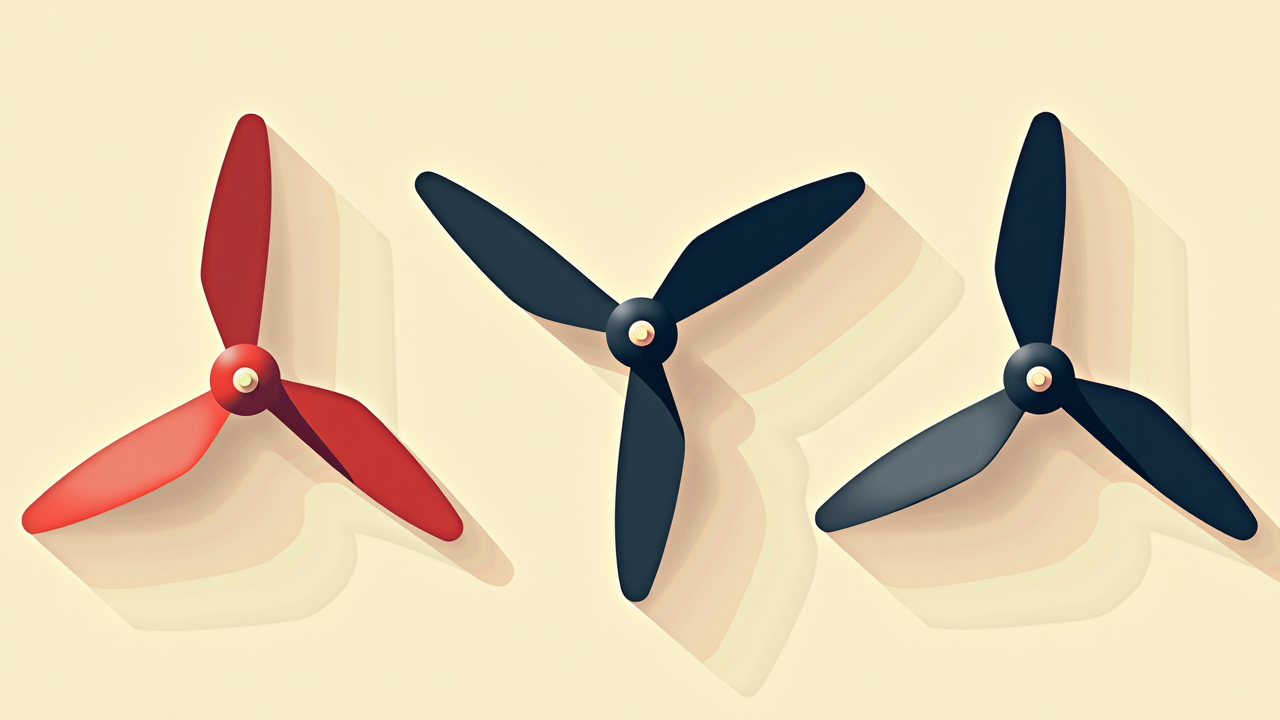
Propellers are the unsung heroes of the drone world—the critical components that directly convert motor power into thrust. After testing hundreds of propeller combinations across various builds, I've found that prop selection can make or break your flying experience, sometimes even more dramatically than motor choice. This comprehensive guide will walk you through everything you need to know about FPV drone propellers, from basic principles to advanced optimization techniques.
Introduction to FPV Drone Propellers
Propellers (commonly called "props") are the airfoils that generate the lift and thrust necessary for flight. They transform the rotational energy from your motors into the aerodynamic forces that keep your drone in the air and allow it to maneuver.
The propellers you choose will significantly impact your drone's performance:
- Thrust and efficiency determine your power usage and flight time
- Response and handling affect how the drone feels to fly
- Noise level impacts stealth and overall flying experience
- Durability determines how well they survive crashes
- Weight affects motor load and responsiveness
Whether you're building your first drone or fine-tuning your racing setup, understanding propeller technology is essential for creating a setup that matches your flying goals.
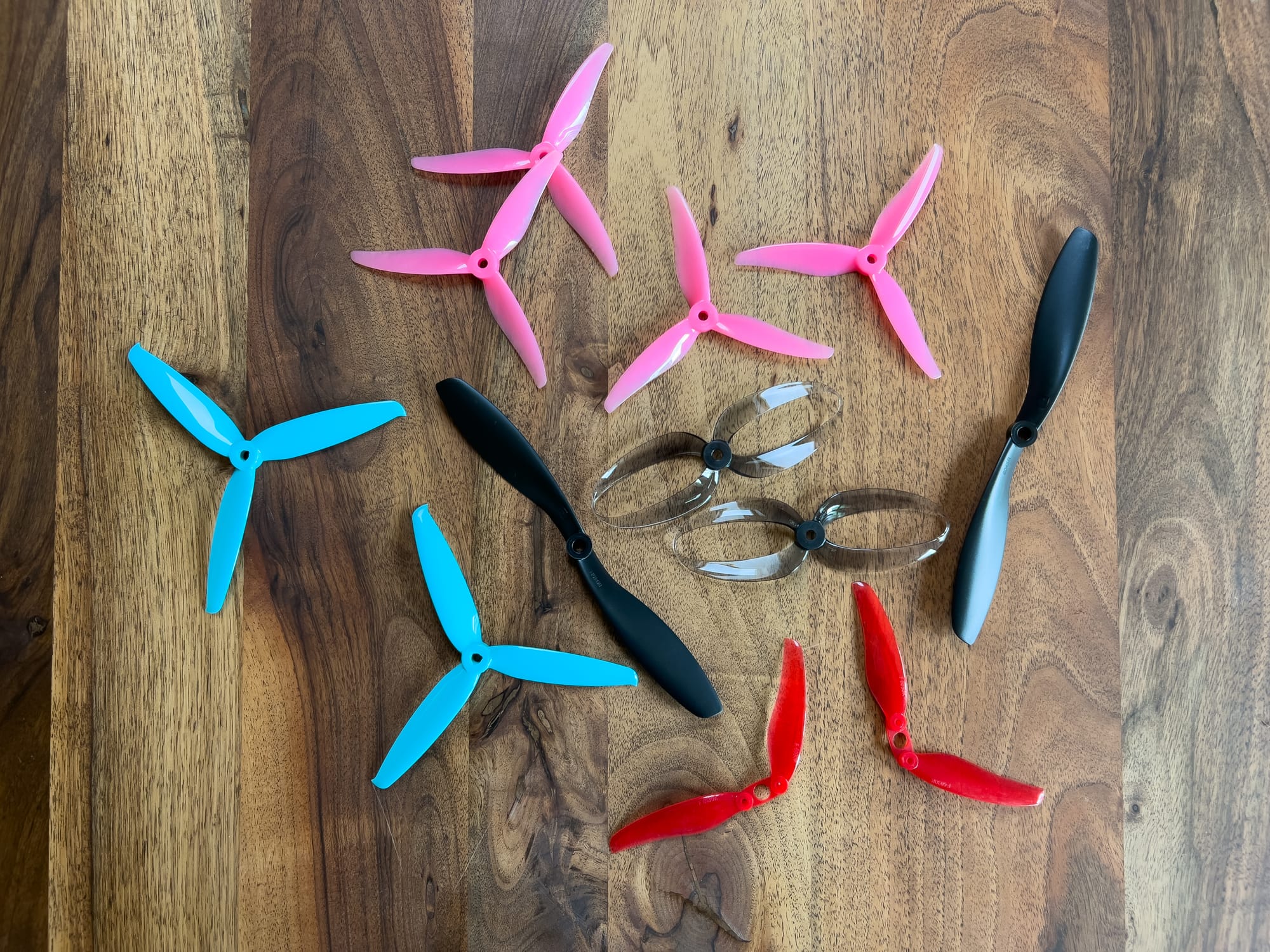
History and Evolution of Drone Propellers
The development of propellers for drones has seen remarkable innovation, particularly in the last decade as the FPV hobby has grown.
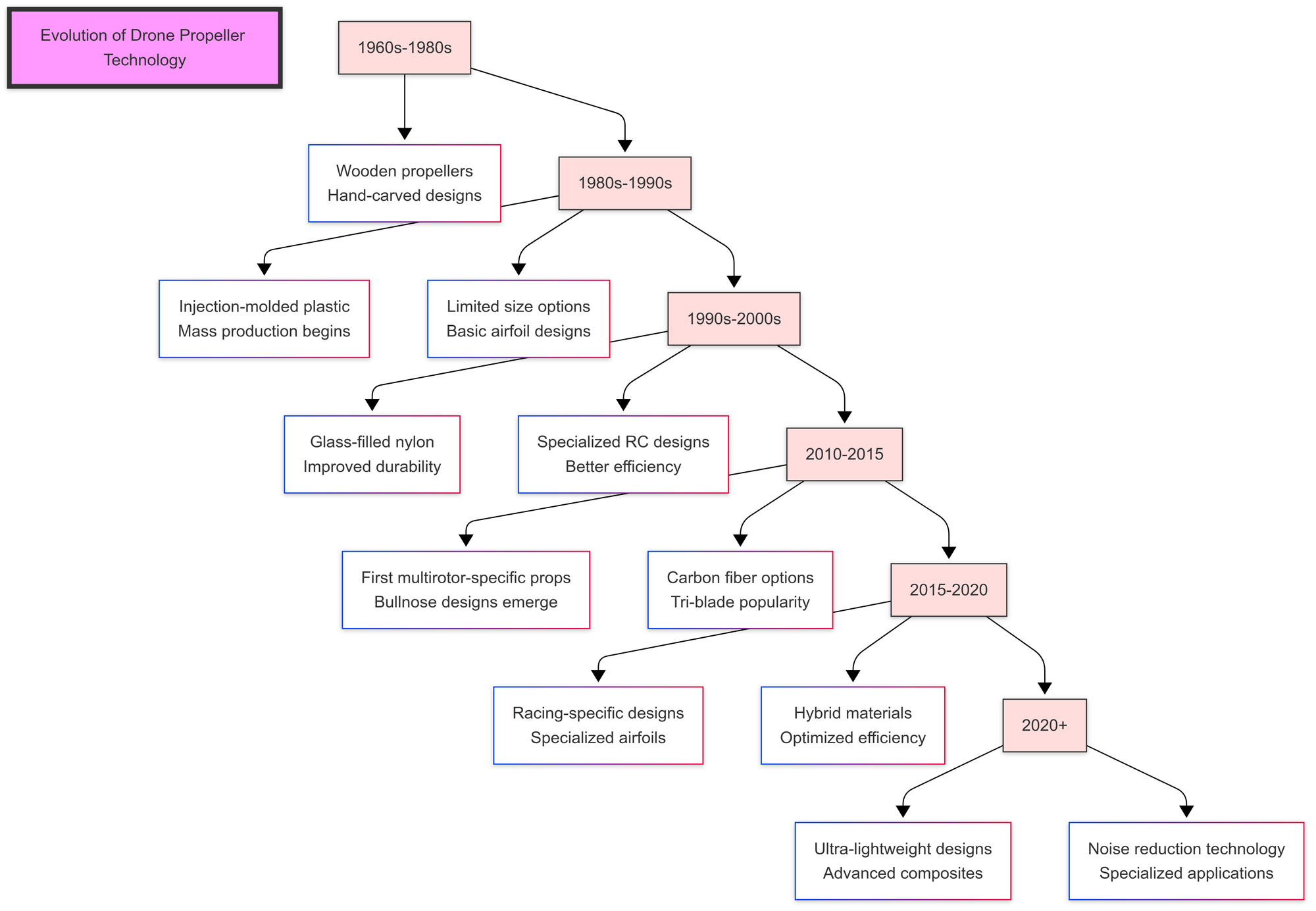
Early RC Propellers (1960s-2000s)
The earliest radio-controlled aircraft used propellers derived from traditional aviation designs:
- 1960s-1980s: Wooden propellers dominated, hand-carved for optimal performance
- 1980s-1990s: Injection-molded plastic props became standard, offering better consistency
- 1990s-2000s: Glass-filled nylon props improved durability while maintaining reasonable weight
These early propellers were primarily designed for fixed-wing aircraft and helicopters, with limited options for the multirotor drones that would later emerge.
The Multirotor Revolution (2010-2015)
The explosion of multirotor drones created demand for specialized propellers:
- 2010-2012: First generation of multirotor-specific props, mostly two-blade designs
- 2012-2013: Introduction of self-tightening designs to prevent props from coming loose
- 2013-2014: Bullnose propellers emerged, offering more thrust at the expense of efficiency
- 2014-2015: Tri-blade (3-blade) propellers became popular for their improved authority and handling
I remember the first time I tried tri-blade props—the difference in handling was immediately noticeable, with much more precise control in corners and during quick direction changes.
Modern FPV Propeller Development (2015-Present)
The past several years have seen rapid advancement in propeller technology specifically for FPV applications:
- 2015-2017: Racing-specific designs with optimized airfoils for maximum thrust
- 2017-2018: Introduction of specialized freestyle props focusing on smooth power delivery
- 2018-2019: Ultra-lightweight designs using advanced materials
- 2019-Present: Noise reduction technology and specialized designs for different flying styles
The rate of innovation has been remarkable—modern props are simultaneously more efficient, more durable, and better performing than their predecessors from just a few years ago.
Fundamentals of Propeller Design
Propeller Terminology
Understanding propeller terminology is essential for making informed choices:
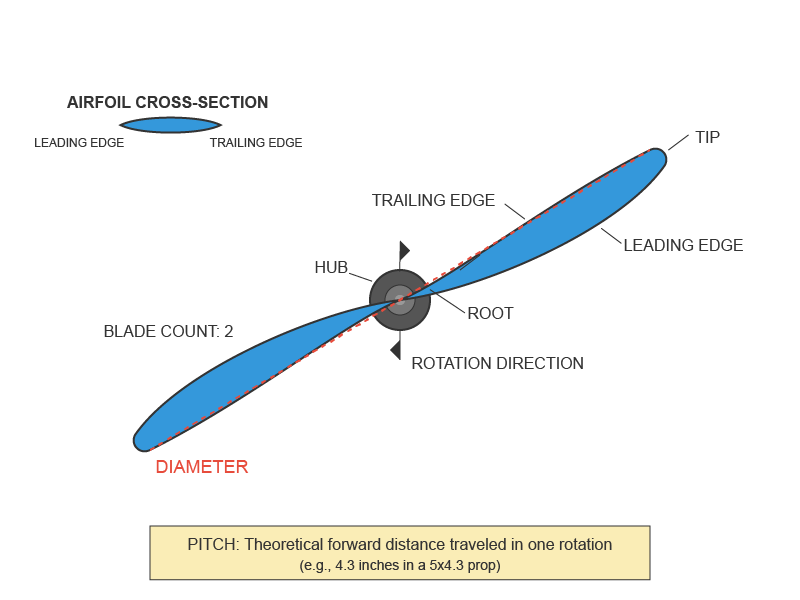
- Diameter: The circle traced by the propeller tips (e.g., 5 inches in a 5-inch prop)
- Pitch: The theoretical forward distance traveled in one rotation (e.g., 4.3 inches in a 5x4.3 prop)
- Blade Count: Number of blades (typically 2, 3, or 4 for FPV drones)
- Hub: The center section that attaches to the motor
- Leading Edge: The front edge that cuts through the air first
- Trailing Edge: The back edge where air flows off the blade
- Airfoil: The cross-sectional shape of the blade
- Tip: The outermost part of the blade, which moves the fastest
- Root: The innermost part of the blade, closest to the hub
Propeller Sizing Convention
FPV propellers are typically labeled with a simple convention:
- 5x4.3x3: This indicates a 5-inch diameter, 4.3-inch pitch, 3-blade propeller
- 3x4.5x2: This would be a 3-inch diameter, 4.5-inch pitch, 2-blade propeller
Some manufacturers may add additional letters to indicate special characteristics:
- V1, V2, etc.: Version numbers
- LR: Long range
- HBN: Hybrid bullnose
- PC: Polycarbonate material
How Propellers Generate Thrust
Propellers work by accelerating air downward, which creates an upward reaction force (thrust) according to Newton's Third Law:
- The propeller's rotation causes its airfoil-shaped blades to move through the air
- The airfoil shape creates a pressure difference between the top and bottom surfaces
- This pressure difference generates lift perpendicular to the blade surface
- Since the blades are angled (pitched), part of this lift is directed downward as thrust
- The greater the pitch and RPM, the more air is accelerated and the more thrust is generated
The efficiency of this process depends on many factors, including the propeller's design, the motor's RPM, and the airflow conditions.
For more details information on flight theory, see:
Drone Flight Theory: Physics and Principles of Multirotor Flight
Propeller Materials
Different materials offer various trade-offs in performance, durability, and weight:
- Polycarbonate (PC): Flexible, durable, and inexpensive. Good for beginners and freestyle flying where crashes are common. Tends to bend rather than break.
- Glass-Filled Nylon (GFN): Stiffer than PC with good durability. A popular middle-ground option offering decent performance and crash resistance.
- Carbon Fiber Reinforced (CFR): Very stiff and lightweight, offering excellent performance and efficiency. More brittle and expensive than other options. Preferred for racing and maximum performance.
- Hybrid Materials: Some props combine materials, such as carbon fiber cores with polycarbonate tips, attempting to balance performance and durability.
I've found that material choice is highly dependent on flying style. For my freestyle builds, I prefer glass-filled nylon props for their balance of performance and durability, while for racing, I'll accept the higher breakage rate of carbon fiber props for their superior performance.
Understanding Propeller Specifications
Diameter
The propeller's diameter significantly impacts its performance characteristics:
- Larger diameter (e.g., 6-7"): More efficient, better for cruising, higher top-end thrust, but slower response
- Medium diameter (e.g., 5"): Good balance of efficiency and responsiveness, standard for freestyle and all-around flying
- Smaller diameter (e.g., 3-4"): Faster response, less efficient, better for agility and indoor flying
The diameter determines how much air the propeller can move. Larger props can move more air but require more torque from the motor and respond more slowly to throttle changes.
Pitch
Pitch refers to the theoretical distance the propeller would travel forward in one complete rotation in a solid medium:
- Higher pitch (e.g., 4.5-5"): More top speed, less torque, less efficient at low speeds
- Medium pitch (e.g., 4-4.5"): Good balance of speed and torque, versatile for most flying styles
- Lower pitch (e.g., 3-4"): More torque, better acceleration, more efficient at low speeds, better handling
Higher pitch props are like a higher gear on a bicycle—great for top speed but harder to get moving. Lower pitch props provide better acceleration and control but limit top speed.
Blade Count
The number of blades affects how the propeller performs:
- 2-blade: Most efficient, lightest, highest top speed, least thrust, smoothest
- 3-blade: Good balance of efficiency and thrust, better cornering, more stable in turbulence
- 4-blade: Highest thrust, best stability, least efficient, heaviest, best for carrying payloads
Adding blades increases thrust but reduces efficiency. Three-blade props have become the standard for most FPV applications due to their good balance of characteristics.
Blade Shape
Various blade shapes have been developed for different performance goals:
- Standard: Traditional tapered design with balanced performance
- Bullnose: Blunt tips that maintain width throughout, providing more thrust at the expense of efficiency
- Hybrid Bullnose: Partial bullnose design attempting to balance thrust and efficiency
- Swept Back: Tips swept backward to reduce noise and improve efficiency
- Biblades: Wide two-blade designs that aim to provide the thrust of a tri-blade with better efficiency
I've experimented extensively with blade shapes and found that hybrid bullnose designs often provide the best balance for freestyle flying, while more aggressive full bullnose props can give an edge in racing scenarios where efficiency is less important than raw thrust.
Propeller Balance
A well-balanced propeller is crucial for optimal performance:
- Reduces vibration
- Improves flight controller sensor readings
- Extends motor bearing life
- Provides smoother video
- Increases efficiency
Factory-balanced props have improved dramatically in recent years, but many pilots still balance their racing and long-range props for optimal performance.
Propeller Selection Guide
Choosing the right propellers involves matching their characteristics to your specific build and flying goals.
Matching Props to Frame Size
Frame size largely dictates appropriate propeller choices:
| Frame Size | Recommended Prop Sizes | Typical Blade Count |
|---|---|---|
| 2-3" Micro | 2"-3" | 2-3 blades |
| 3.5" Cinewhoop | 3"-3.5" | 3-4 blades |
| 4" Lightweight | 4"-4.5" | 3 blades |
| 5" Standard | 5"-5.5" | 2-3 blades |
| 6" Freestyle | 6"-6.5" | 2-3 blades |
| 7"+ Long Range | 7"-8" | 2-3 blades |
These are starting points—your specific requirements might call for variations from these recommendations.
Considerations for Different Flying Styles
Different flying styles demand different propeller characteristics:
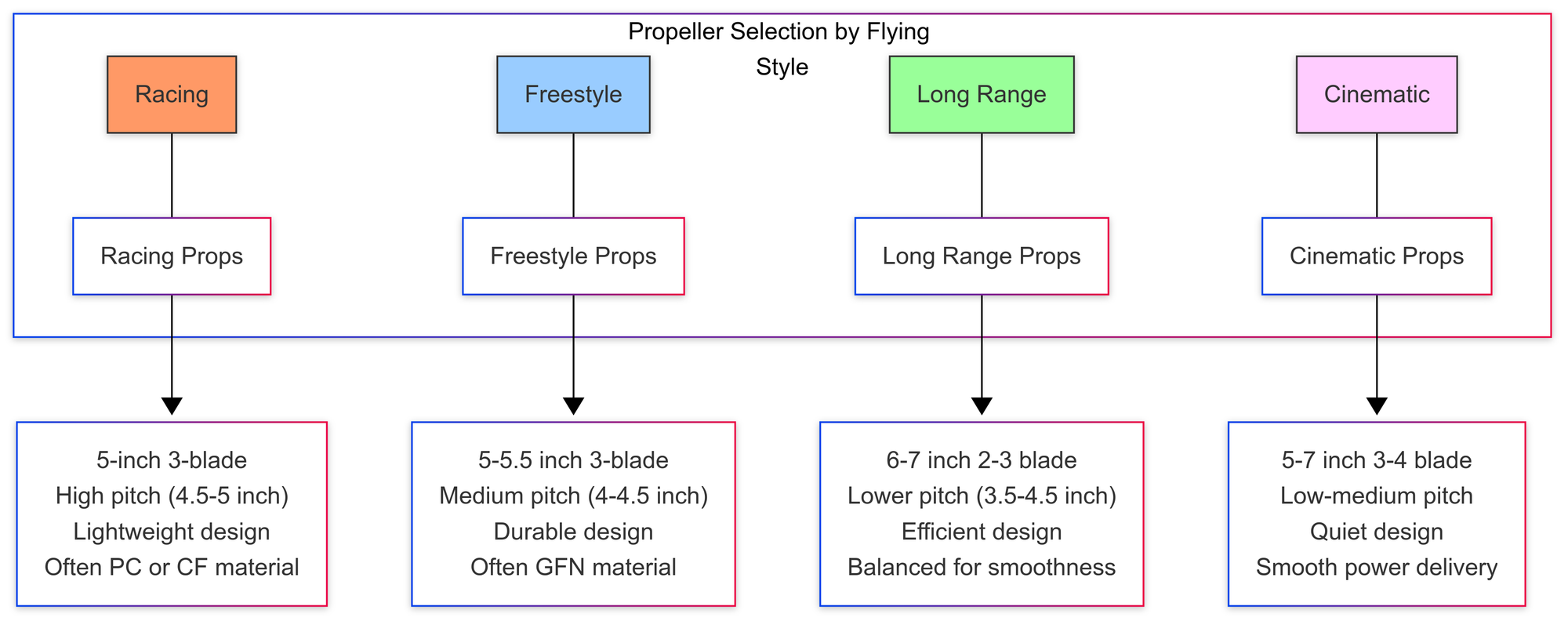
Racing
- Priority: Speed, acceleration, responsiveness
- Recommended: Higher pitch (4.5-5"), lightweight design
- Material: Carbon fiber or durable polycarbonate
- Notes: Racing props prioritize performance over efficiency and noise
For racing, I typically choose a slightly higher pitch prop with an aggressive blade design. The extra pitch helps maintain speed through straightaways, while the responsive nature of racing frames compensates for the slightly slower throttle response.
Freestyle
- Priority: Smooth power delivery, durability, good handling
- Recommended: Medium pitch (4-4.5"), balanced design
- Material: Glass-filled nylon or durable polycarbonate
- Notes: Need to handle varied flying from smooth cruising to aggressive maneuvers
For freestyle, I prefer props with medium pitch that provide a good balance of thrust and control. The ability to transition smoothly from high-speed passes to precise movements is crucial for freestyle flying.
Long Range/Efficiency
- Priority: Efficiency, smooth operation, stability
- Recommended: Lower pitch (3.5-4.5"), often larger diameter (6-7")
- Material: Efficient designs, often with 2 blades for maximum efficiency
- Notes: Must balance power needs with efficiency for extended flight times
On my long-range builds, I've found that bi-blade props with moderate pitch provide the best efficiency. While they sacrifice some thrust and handling compared to tri-blades, the extended flight time is well worth the trade-off.
Cinematic
- Priority: Smooth footage, low noise, stability
- Recommended: Medium-low pitch, often larger diameter
- Material: Varies, often focused on noise reduction
- Notes: Smooth throttle response is critical for clean footage
Propeller and Motor Matching
Propellers and motors must be matched carefully:

Key matching principles:
- KV and Pitch: Higher KV motors pair better with lower pitch props, while lower KV motors work better with higher pitch props
- Stator Size and Diameter: Larger stator motors can handle larger diameter props
- Power Handling and Blade Count: More powerful motors can handle more aggressive props with higher blade counts
Here's a comprehensive prop-motor matching table to help you find the optimal combination for your build:
| Frame Size | Flying Style | Motor Size | Motor KV | Recommended Props | Notes |
|---|---|---|---|---|---|
| 2-3" Micro | All-around | 1103-1105 | 6000-11000KV | 2x2.5x3 - 3x3x3 | Ultra-light builds, indoor flying |
| 2-3" Micro | Racing | 1204-1306 | 4000-6000KV | 2.5x2.5x3 - 3x3.5x3 | Emphasis on responsiveness |
| 3" Toothpick | Freestyle | 1303-1404 | 3500-4500KV | 3x3x3 | Lightweight, efficient builds |
| 3.5" Cinewhoop | Cinematic | 1404-1506 | 3000-3600KV | 3.5x3.5x3 - 3.5x4x4 | Protected props, smooth footage |
| 4" | Racing | 1606-1806 | 2800-3400KV | 4x3x3 - 4x4x3 | Compact racing builds |
| 4" | Freestyle | 1806-2004 | 2600-3200KV | 4x3.5x3 - 4x4x3 | Good balance of agility and power |
| 5" | Racing | 2004-2306 | 2400-2800KV | 5x4x3 - 5x4.8x3 | High pitch for speed, lightweight |
| 5" | Freestyle | 2207-2306 | 1750-2400KV | 5x4x3 - 5x4.5x3 | Medium pitch for control |
| 5" | Long Range | 2306-2407 | 1700-1900KV | 5x4x3 - 5x4.5x2 | Efficiency-focused |
| 6" | Freestyle | 2306-2407 | 1600-1900KV | 6x4x3 - 6x4.5x3 | More efficient than 5" |
| 6" | Long Range | 2407-2507 | 1500-1700KV | 6x4x2 - 6x4.5x3 | Good efficiency, moderate weight |
| 7"+ | Long Range | 2507-2807 | 1300-1600KV | 7x4x2 - 7x5x3 | Maximum efficiency |
| 7"+ | Heavy Lift | 2807-3108 | 1100-1400KV | 7x4x3 - 8x4.5x3 | Carrying capacity prioritized |
Some specific examples from my experience:
- 5x4x3 props: Work well with 2300-2600KV motors on 4S (freestyle)
- 5x4.5x3 props: Better matched with 2000-2300KV motors on 4S or 1700-1900KV on 6S
- 5x3x2 props: Can use higher KV (2600-2800KV) for maximum responsiveness on 4S
I once tried running aggressive 5x4.3x3 bullnose props on high KV (2750KV) motors, and while the thrust was incredible, the motors got so hot I could smell them after a 2-minute flight. Proper matching is crucial for longevity.
Battery Voltage Considerations
Battery voltage affects propeller selection:
- Higher voltage (6S): Can use lower pitch props for better response while maintaining thrust
- Lower voltage (3S-4S): Often benefits from higher pitch props to maintain thrust
The combination of battery voltage, motor KV, and prop pitch/diameter determines your final RPM and thrust. These three factors must be balanced for optimal performance.
For more detailed information on batteries, see:
Overview of Drone Battery Types and Chemistry
Propeller Performance Metrics
Understanding how propellers perform requires looking beyond specifications to actual performance data.
Thrust Testing
Thrust tests measure the actual force produced by a motor/prop combination at various throttle levels:
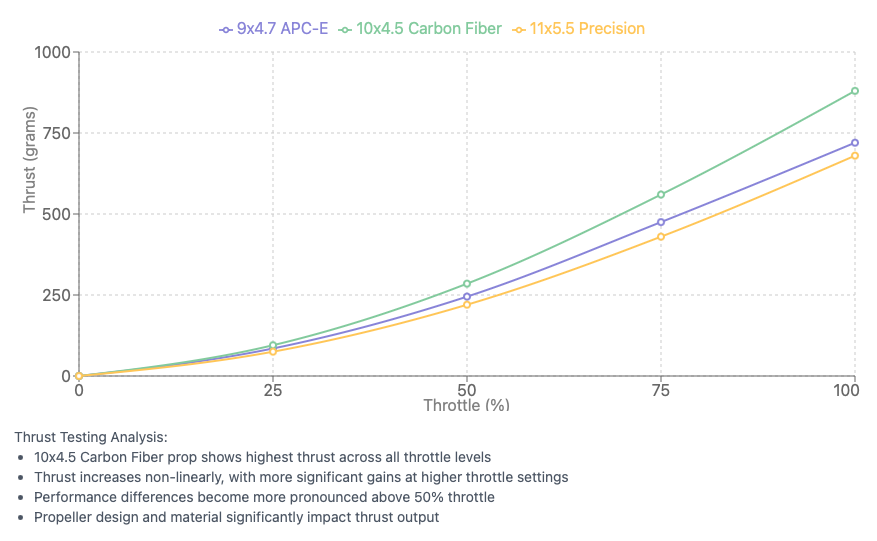
Key metrics from thrust tests include:
- Maximum thrust: Peak force produced at 100% throttle
- Thrust curve: How linearly thrust increases with throttle input
- Efficiency: Thrust produced per watt of power consumed
- Amp draw: Current consumption at different throttle levels
I've tested dozens of propellers on my thrust stand, and the results often contradict marketing claims. Some props advertised as "high thrust" actually produce less force than more modest options but draw significantly more current.
Thrust-to-Weight Ratio
The thrust-to-weight ratio is a critical metric for drone performance:
- Racing: 12:1 to 15:1 ratio (extremely responsive, shorter flight times)
- Freestyle: 8:1 to 12:1 ratio (good balance of responsiveness and flight time)
- Cinematic: 5:1 to 8:1 ratio (smoother flying, longer flight times)
- Long Range: 3:1 to 5:1 ratio (maximum efficiency, stable flight)
Propeller choice is one of the easiest ways to adjust your thrust-to-weight ratio without changing motors or frame.
Efficiency Considerations
Propeller efficiency (thrust per watt) varies across designs:
- Two-blade props are generally more efficient than three-blade props
- Lower pitch props are more efficient at lower speeds
- Higher pitch props are more efficient at higher speeds
- Larger diameter props are more efficient than smaller diameter props at the same RPM
For long-range builds, I prioritize efficiency above all else, often choosing larger diameter two-blade props with moderate pitch.
Noise Characteristics
Propeller noise is a significant consideration for many pilots:
- Blade tip speed is the primary factor in noise generation
- Blade shape affects the noise signature
- Blade count impacts overall noise level
- Pitch influences the frequency of the noise
Some propeller designs specifically focus on noise reduction through swept tips, special blade profiles, or optimized pitch distribution. These can be crucial for flying in noise-sensitive areas or for cinematic work where prop noise can be picked up by microphones.
Advanced Propeller Concepts
For those looking to optimize performance further, these advanced concepts can help fine-tune propeller selection and setup.
Airfoil Design
The cross-sectional shape of the propeller blade significantly impacts performance:
- Symmetric airfoils: Equal top and bottom curvature, good for 3D maneuvers
- Asymmetric airfoils: More curved on top, more efficient for forward flight
- Flat-bottom airfoils: Simple design, less efficient but easy to manufacture
- Reflexed airfoils: Trailing edge curves up, providing stability at high speeds
Most modern FPV propellers use carefully designed asymmetric airfoils optimized for their intended use case.
Pitch Distribution
Pitch doesn't have to be constant across the entire blade:
- Progressive pitch: Increases from hub to tip, improving efficiency
- Regressive pitch: Decreases from hub to tip, improving stability
- Constant pitch: Same throughout, simpler to design and manufacture
Advanced propellers often use variable pitch distribution to optimize performance across different sections of the blade.
Blade Loading
Blade loading refers to how much thrust is generated per unit area of the blade:
- High blade loading: More thrust from smaller blade area, less efficient
- Low blade loading: More efficient but requires larger blades
Racing props tend to have higher blade loading for maximum thrust, while efficiency-focused props have lower blade loading.
Tip Designs
The tip of the propeller is critical for performance and noise:
- Pointed tips: Reduce drag but can be fragile
- Rounded tips: More durable but slightly less efficient
- Swept tips: Reduce noise and tip vortices
- Upswept tips: Improve efficiency at the expense of noise
I've found that swept tip designs offer a good compromise between performance and noise for most flying styles.
Propeller Maintenance and Troubleshooting
Proper propeller maintenance is essential for optimal performance and safety.
Inspection and Cleaning
Regular inspection prevents issues:
- Check for cracks - Especially near the hub and along the leading edge
- Look for chips - Small chips can create vibration and reduce efficiency
- Clean debris - Dirt and grass can affect balance and performance
- Check hub integrity - Ensure the mounting hole is not damaged or enlarged
I make it a habit to inspect my props after every flying session, particularly after crashes or when I notice any change in flight characteristics.
Balancing Techniques
While factory balancing has improved, manual balancing can still be beneficial:
- Static balancing - Using a prop balancer to identify heavy blades
- Dynamic balancing - More advanced technique measuring vibration during rotation
- Field balancing - Simple techniques like adding tape to lighter blades
For racing and long-range setups, I still balance all my props, as even small imbalances can affect performance and flight controller tuning.
When to Replace Props
Guidelines for propeller replacement:
- Visible damage - Cracks, chips, or deformation
- Reduced performance - Noticeable drop in thrust or efficiency
- Increased vibration - Can indicate hidden damage or deformation
- After significant crashes - Even if damage isn't immediately visible
- Preventative replacement - For critical flights or competitions
I've learned to be conservative with prop replacement—the cost of new props is minimal compared to the potential issues caused by damaged ones.
Troubleshooting Common Issues
Common propeller-related problems and solutions:
- Vibration: Usually indicates damaged or unbalanced props
- Motor overheating: Often caused by props that are too aggressive for the motors
- Poor handling: Can result from incorrect prop selection for the flying style
- Reduced flight time: May indicate inefficient props or props that are too aggressive
- Prop wash oscillations: Sometimes improved by changing prop type or tuning
Pro Tips and Expert Insights
After years of testing countless propellers, I've gathered some insights that go beyond the specifications.
Fine-tuning Propeller Performance
- Try different brands - Even props with identical specs can fly differently
- Experiment with pitch - Small changes can dramatically alter flight characteristics
- Consider mixed setups - Some pilots use different props on front and rear motors
- Test in your actual conditions - Bench tests don't always translate to real-world performance
- Keep notes - Document your findings to build a personal reference database
Weather and Environmental Considerations
Different environmental conditions can affect propeller performance:
- High altitude: Thinner air reduces prop efficiency; consider larger diameter or higher pitch
- Cold weather: Air density increases, potentially allowing more aggressive props
- Hot weather: Reduced air density may require less aggressive props to prevent motor overheating
- Humid conditions: Can slightly affect performance due to changes in air density
I've noticed that my summer and winter prop selections often differ slightly, with more aggressive props working better in cooler conditions due to the increased air density and better motor cooling.
Racing Secrets
Competitive racers often:
- Carry multiple prop types to match track conditions
- Use more aggressive props for qualifying than for longer finals
- Balance all racing props for maximum performance
- Match props to track layout - Higher pitch for tracks with long straightaways, lower pitch for technical tracks
- Pre-warm props in cold weather to improve flexibility and performance
Freestyle and Cinematic Tips
For smooth, controlled flying:
- Prioritize smooth power delivery over maximum thrust
- Consider noise level for cinematic work
- Test for prop wash handling in various maneuvers
- Look for consistent feel throughout the throttle range
- Balance durability and performance based on your skill level and flying location
FAQ: Common Questions About Drone Propellers
How do I know what size props to use for my drone?
Start with the frame size and intended use. For a standard 5" freestyle quad, 5" props are the obvious choice, but you'll need to consider pitch and blade count based on your motors and flying style. For racing, consider slightly higher pitch props for better top speed. For micro builds under 3", match the prop size to your frame's prop clearance specifications.
What does prop pitch actually mean?
Pitch represents the theoretical forward distance the propeller would travel in one complete rotation if it were moving through a solid medium. A 5x4.5 prop has a 5-inch diameter and would theoretically move forward 4.5 inches per rotation. Higher pitch provides more forward speed but requires more power and provides less torque, similar to a higher gear on a bicycle.
Can I mix different props on the same drone?
While it's technically possible and some pilots experiment with different props on front and rear motors, it's generally not recommended for beginners. Different props can create handling imbalances and make tuning difficult. If you want to experiment with this advanced technique, make small, incremental changes and test thoroughly.
How important is propeller balance?
Propeller balance has become less critical as manufacturing quality has improved, but it's still important for optimal performance. Unbalanced props create vibration that can affect flight controller sensors, reduce motor bearing life, and degrade video quality. For casual flying with quality props, factory balance is often sufficient, but for racing or long-range flying, manual balancing can still provide benefits.
How do props affect flight time?
Props significantly impact flight time through their efficiency. Generally:
- Larger diameter props are more efficient than smaller ones
- Two-blade props are more efficient than three-blade props
- Lower pitch props are more efficient at lower speeds
- Well-matched props and motors operate in their efficiency sweet spots
For maximum flight time, consider larger diameter, lower pitch, two-blade props, assuming your frame has clearance for them.
What's more important, prop material or design?
Both are important but serve different purposes. Material primarily affects durability and weight, while design (pitch, blade shape, airfoil) determines performance characteristics. For most pilots, design has a more noticeable impact on flight feel, while material choice is more about practical considerations like crash resistance and replacement frequency.
How often should props be replaced?
Replace props when:
- Visible damage is present (cracks, chips, deformation)
- Performance noticeably decreases
- Vibration increases
- After significant crashes
- Before critical flights or competitions
Many pilots keep "practice props" (slightly damaged but still flyable) and "competition/recording props" (perfect condition) to balance cost and performance.
Do expensive props really perform better than budget options?
In many cases, yes, but with smaller differences than you might see with motors or flight controllers. Premium props often offer more consistent manufacturing, better balance out of the package, and optimized designs. However, mid-range props from reputable manufacturers often provide 90% of the performance at a lower cost. For beginners and intermediate pilots, the difference may not justify the additional expense.
How can I tell if my props are damaged after a crash?
After a crash, check for:
- Visible cracks, especially near the hub
- Chips or nicks along the leading and trailing edges
- Bent or deformed blades
- Hub damage or enlargement of the mounting hole
- Unusual flexibility compared to new props
Even if props look undamaged, they may have internal stress that can cause failure later. When in doubt, replace them, especially if you notice any change in flight characteristics or vibration.
What's the difference between freestyle and racing props?
Racing props typically prioritize maximum thrust and top speed, often with higher pitch (4.5-5") and more aggressive blade designs. They sacrifice some efficiency and smoothness for raw performance. Freestyle props focus on smooth power delivery, consistent feel throughout the throttle range, and good handling in various maneuvers, typically with medium pitch (4-4.5"). Racing props tend to feel more "punchy" while freestyle props offer more predictable, linear response.
Conclusion
Selecting the right propellers for your FPV drone is a critical decision that affects every aspect of flight performance. The perfect prop isn't necessarily the most aggressive or the most expensive—it's the one that best matches your specific requirements, flying style, and the rest of your components.
For beginners, I recommend starting with durable, mid-range propellers in standard configurations (5x4.3x3 for 5" freestyle quads) from reputable manufacturers. As you develop your skills and preferences, you can experiment with different options tailored to your evolving flying style.
Remember that propeller performance is just one part of a complex system. The best props won't perform well with mismatched motors, batteries, or flight controller tuning. Take a holistic approach to your build, ensuring all components work harmoniously together.
The FPV propeller landscape continues to evolve rapidly, with manufacturers constantly pushing the boundaries of what's possible in terms of performance, efficiency, and durability. By understanding the fundamental principles and specifications covered in this guide, you'll be well-equipped to navigate these changes and make informed decisions for your builds.
Whether you're building your first drone or your fiftieth, I hope this guide helps you find the perfect propellers to match your flying dreams. Happy flying!
References and Further Reading
- Drone Motors: Selection, Performance, and Optimization
- Drone ESCs: Principles and Operation
- Drone Flight Controllers: Principles and Operation
- Overview of Drone Battery Types and Chemistry
- Drone Flight Theory: Physics and Principles of Multirotor Flight
External Resources
- Miniquad Test Bench - Comprehensive propeller testing data
- Joshua Bardwell's YouTube Channel - Detailed propeller explanations and tutorials
- eCalc Propeller Calculator - Tool for estimating propeller performance with different motors

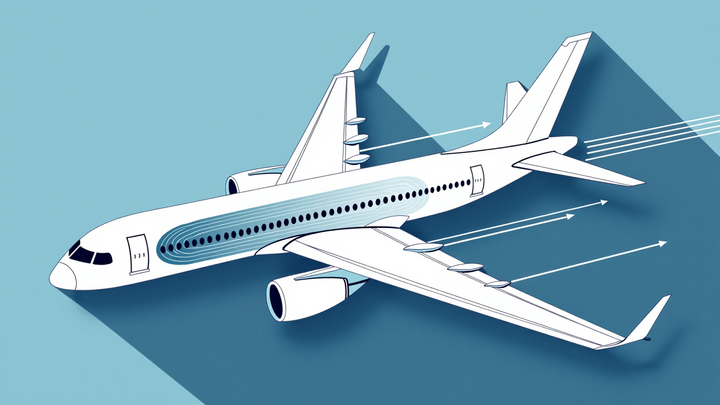
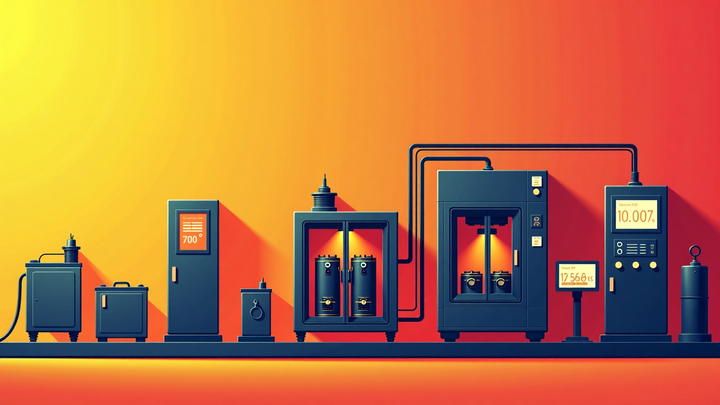
Comments ()